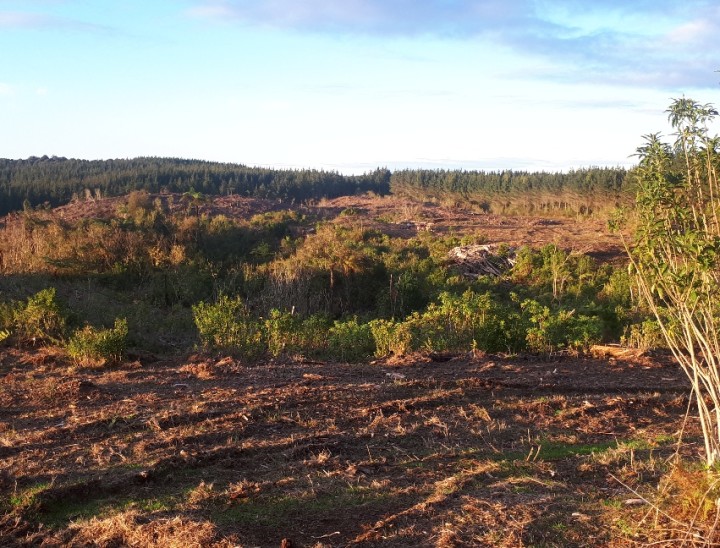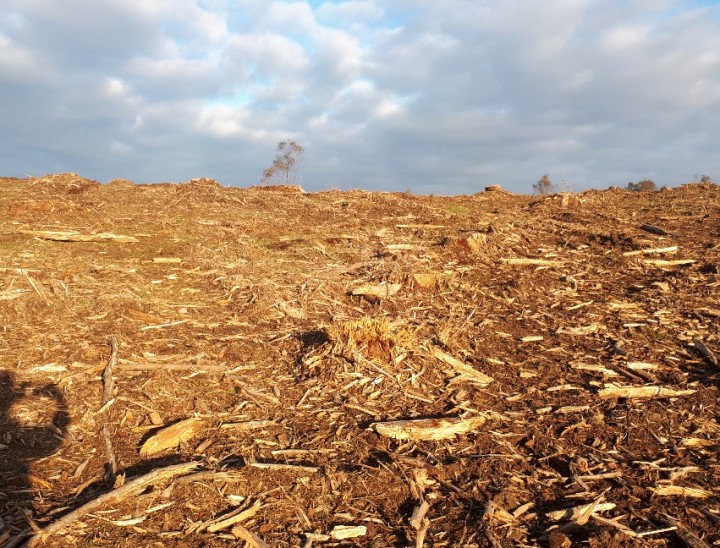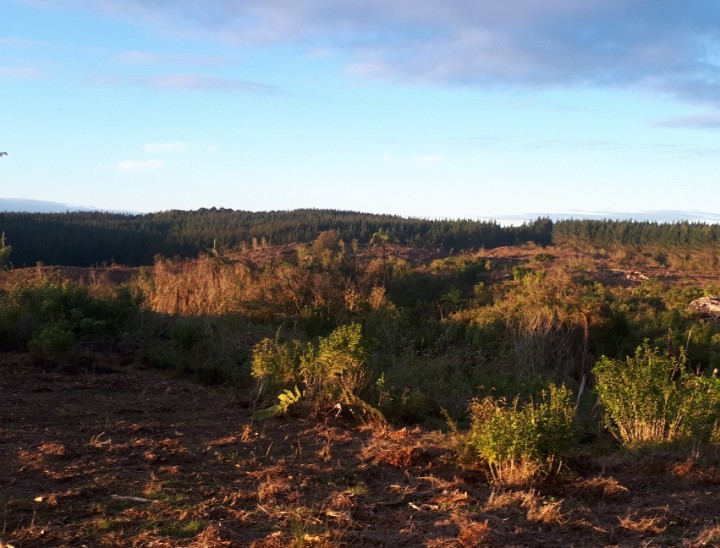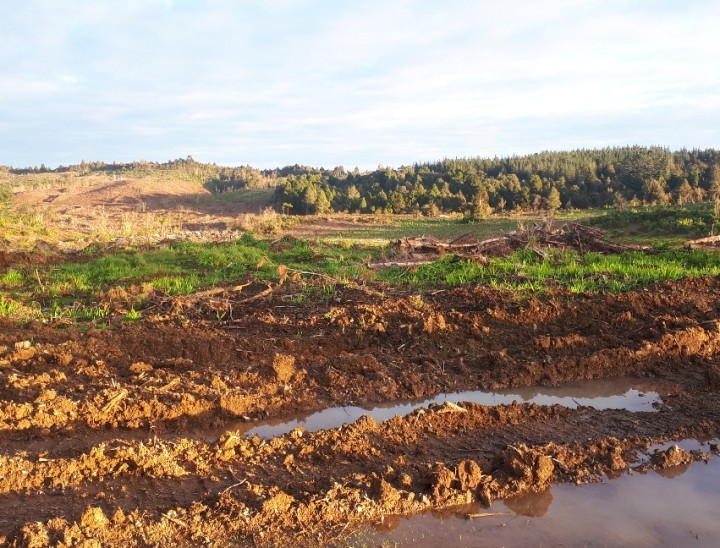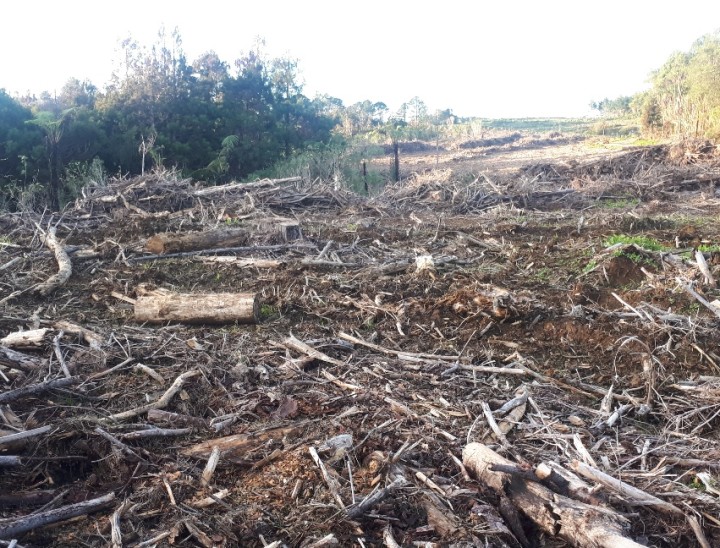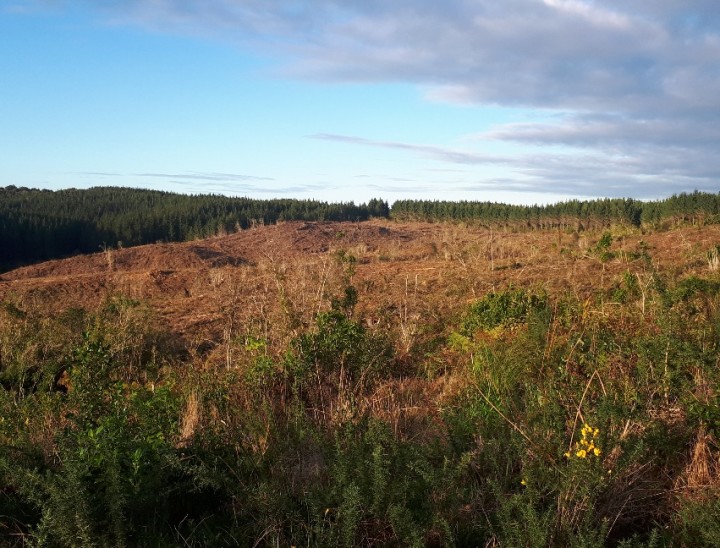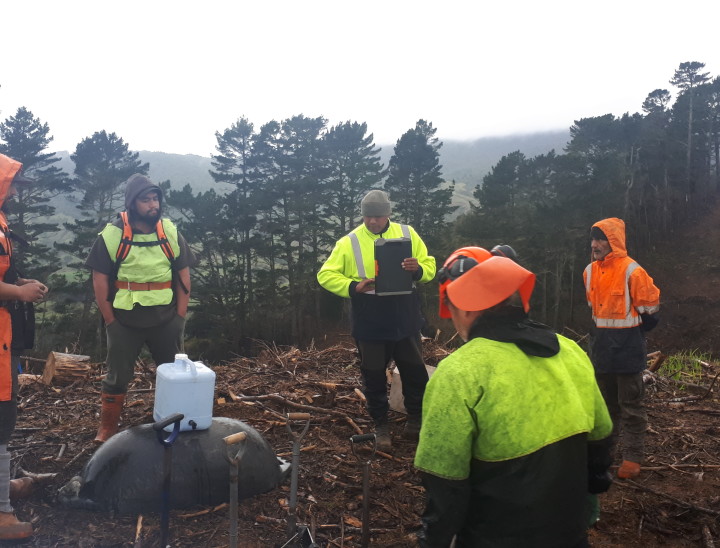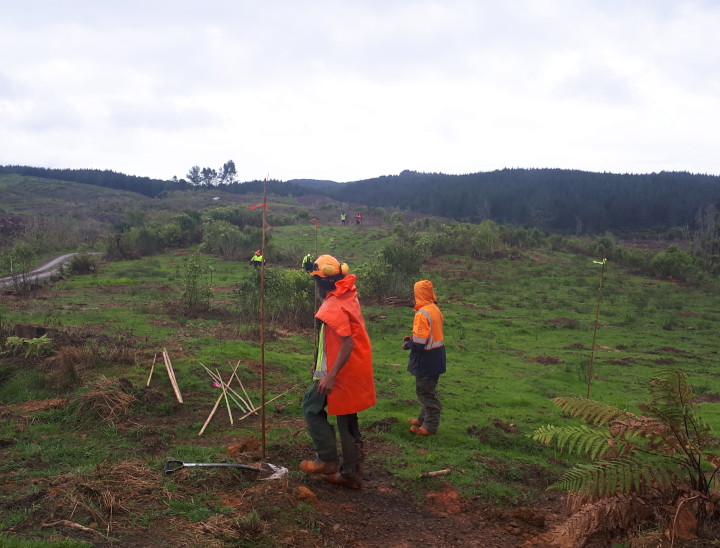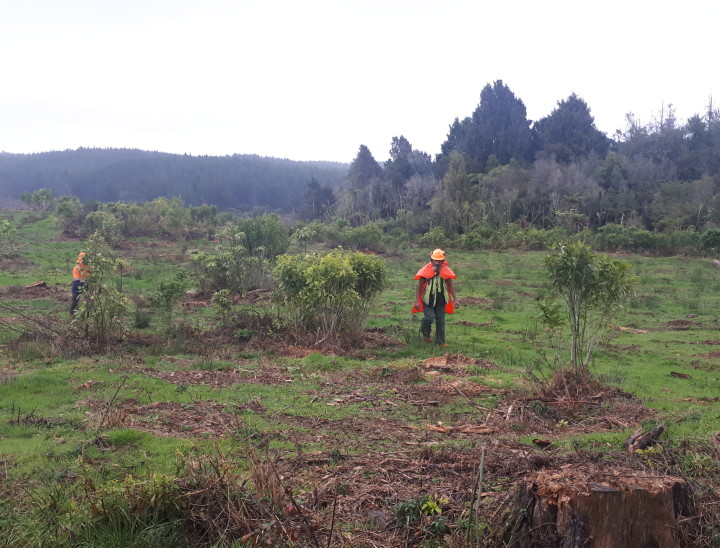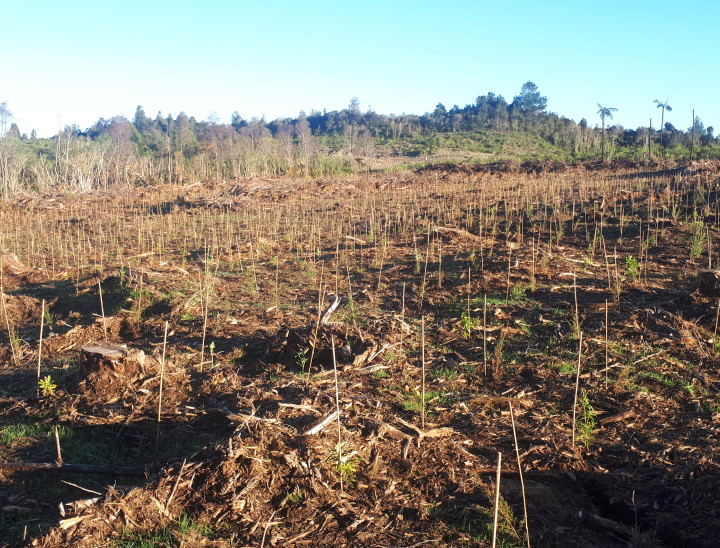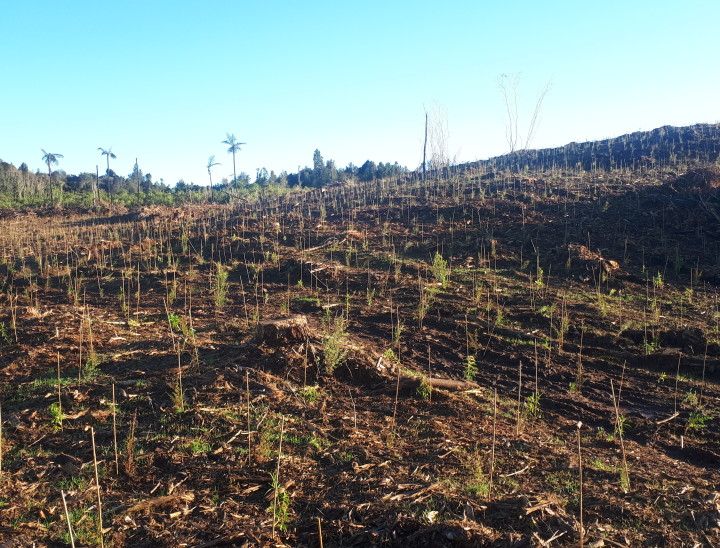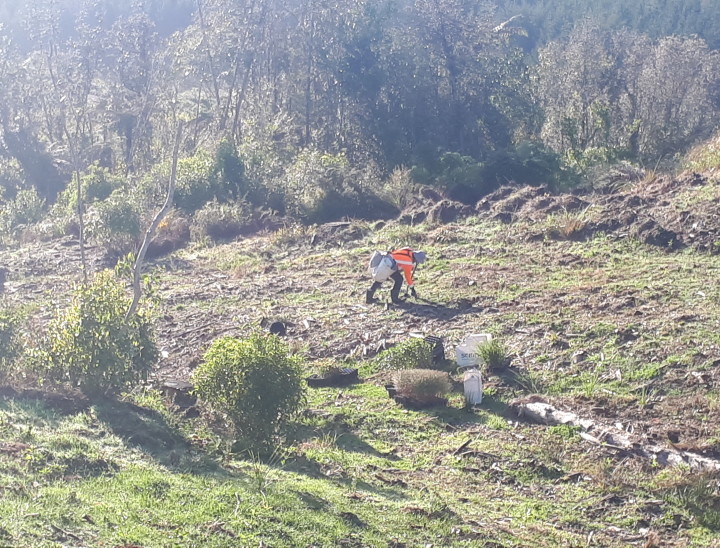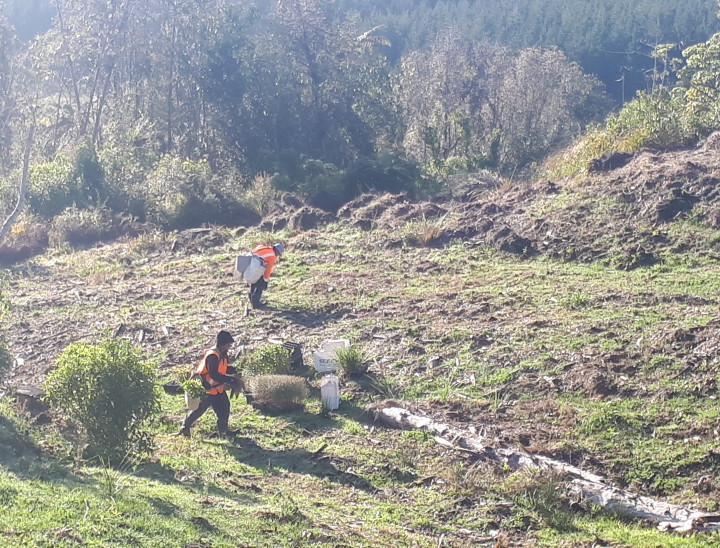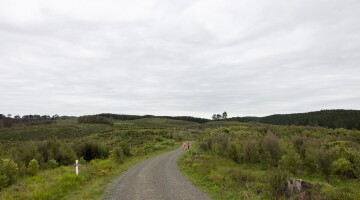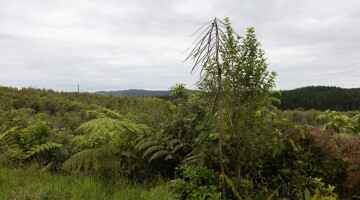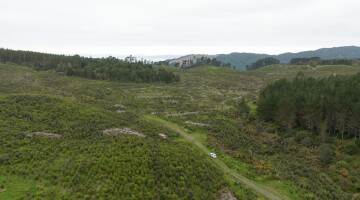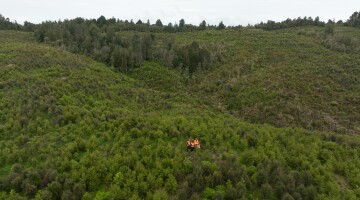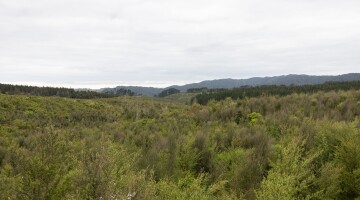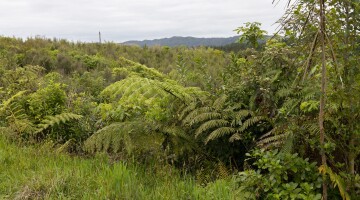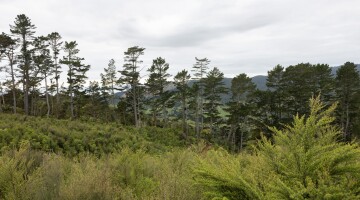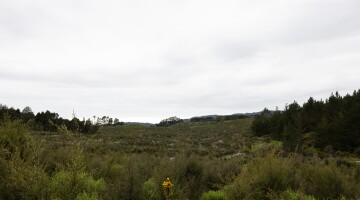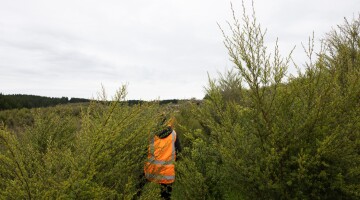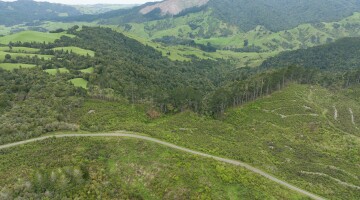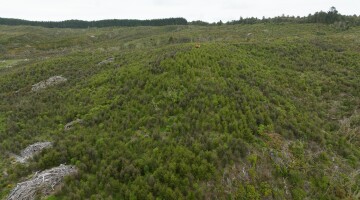Natural Habitats was appointed by Watercare to restore over 15 Hectares of former pine forest land into native forest.
The primary driver for the project was to protect Auckland’s water supply from sediment, silt and runoff.
Location: Auckland Region
Project Type: Revegetation
Client: Watercare
Eco-sourcing: Natural Habitats
Planting: Natural Habitats
About
In 2017, the Tasman Tempest battered the upper North Island bringing 1 in 100-year rainfall with it. According to NIWA’s High Intensity Rainfall System, 225mm of rain fell in 12 hours in the Upper Hunua region.
This significant rain event caused huge amounts of sediment to be washed into the Hunua dams resulting in strict water restrictions for Auckland residents to allow Watercare to process water.
“Sediment and silt are our number one enemy from a water supply point of view” said Watercare Chief Executive Raveen Jaduran.
This led to Watercare purchasing the surrounding land from a private forestry company. The Hunua dams account for 65% of Auckland’s water supply and Watercare sought to control what’s used within the catchments as well as protect against sediment, silt and slash runoff.
Natural Habitats was appointed as one of the key landscaping contractors to supply almost a quarter of a million native plants and plant around 90,000 over a period of 9 months in 2019 and 2020.
Watercare’s planting vision was to recreate the biodiverse ecology of the Hunua Region, keeping the environment as natural as possible. This required all plants to be eco-sourced from the region to reflect the native ecology and give the plants a greater chance of surviving.
This unique environment demanded skilled planters to carefully handle plants from germination to transport, planting and maintenance. Planting density and layout had strict requirements to minimise space for weed invasion and allow for on-going monitoring.
Quality Control throughout the planting was meticulous with test squares set up throughout the site. Any faults found within the squares were applied as a percentage to an entire block and any remedial works required were actioned immediately. Watercare supported this initiative with daily inspections carried out by a fulltime Water Care Supervisor.
Adding to the complexities of this significant project was the natural topography of the site with 30-degree slopes in many areas. Steep banks are challenging to navigate while planting by hand and the site’s altitude creates its own - often very cold, microclimate.
Lead by Project Manager at the time Dave Meyer, a team of 5 landscapers completed this arduous project.
Almost 4 years on, Dave visited the forest and said “it’s quite emotional seeing the progress the plants have made.
"Having planted such small saplings and seeing them all thriving makes you feel like a proud parent."
“The team really had their work cut out for them and the growth today reflects the level of passion and care they had while bringing the forest to life.”
While this reforestation project was driven by the need to provide clean water for Auckland, Headworks manager Joseph Chaloner Warman who managed the planting said the project also provides “a whole pile of social, environmental and all sorts of other outcomes.”
These outcomes include the increase in biodiversity, which is a good sign of a healthy ecosystem. During Dave’s recent visit, endangered Kākā flew overhead and in June 2022, it was reported that the Hunua Ranges are now home to the country’s second largest Kōkako population.
Watercare’s long-term vision is to plant 3.7 million trees in the Hunua area by 2048 through hand planting and seed dispersal by drone.

